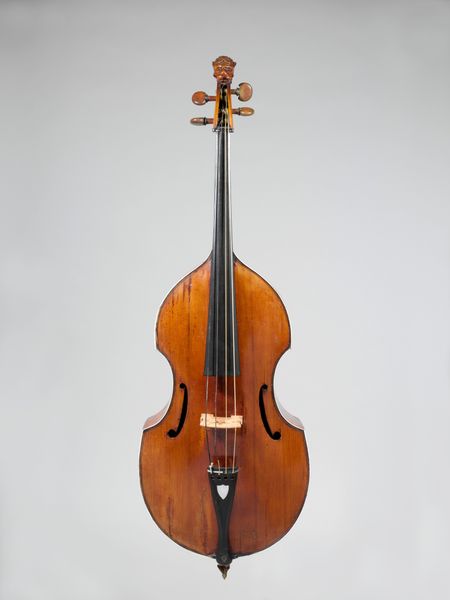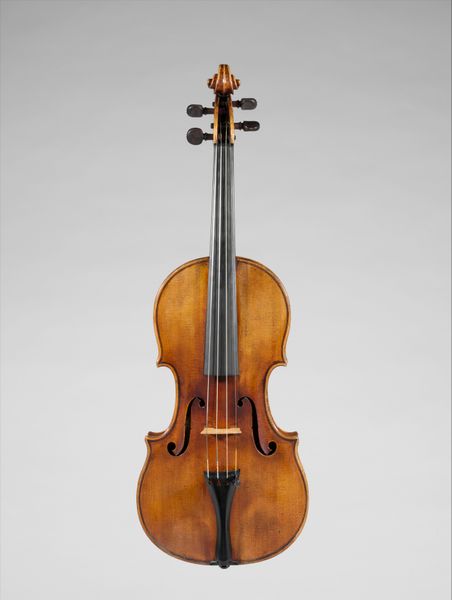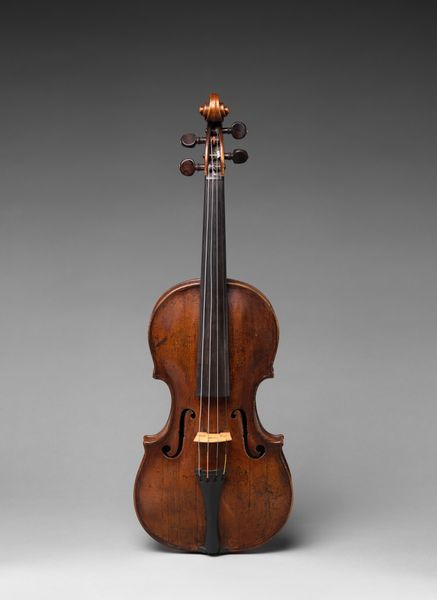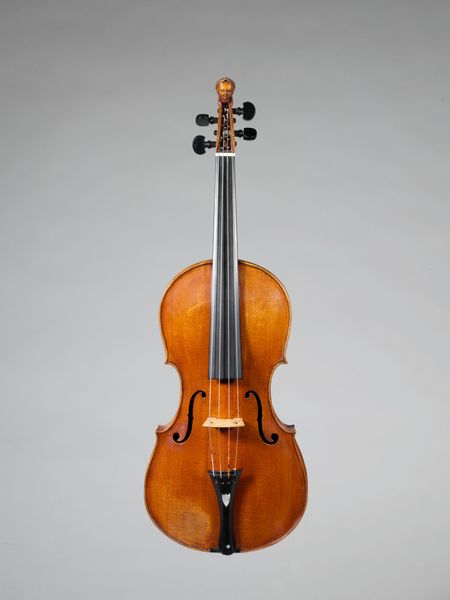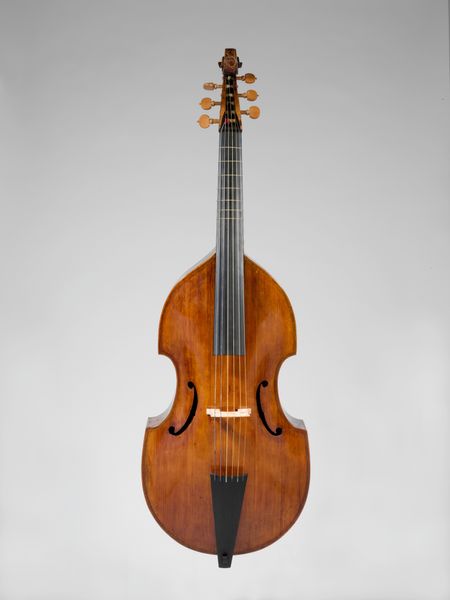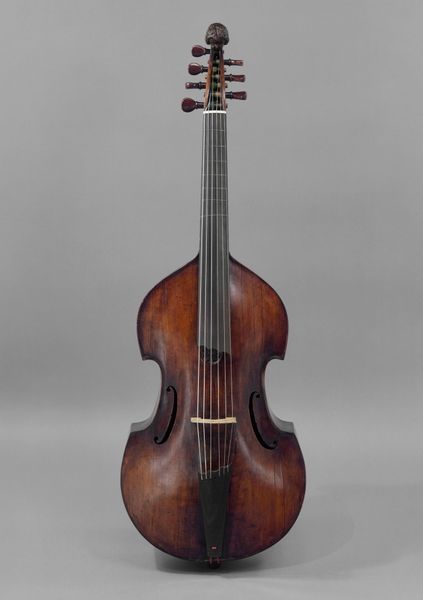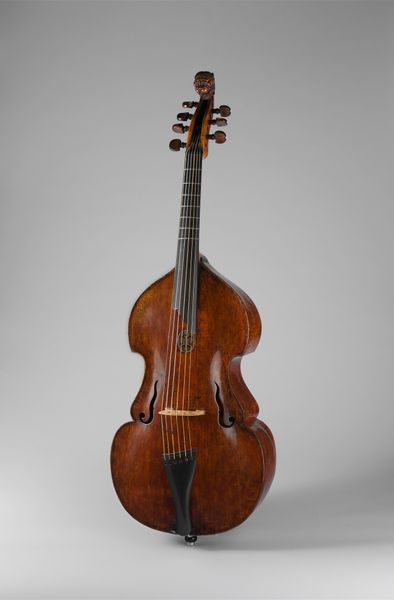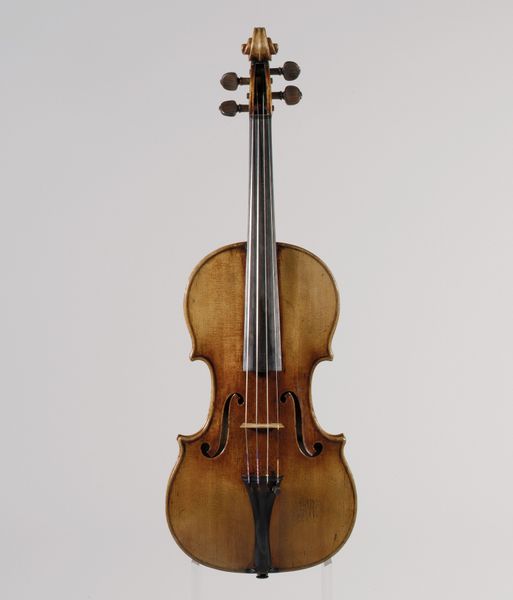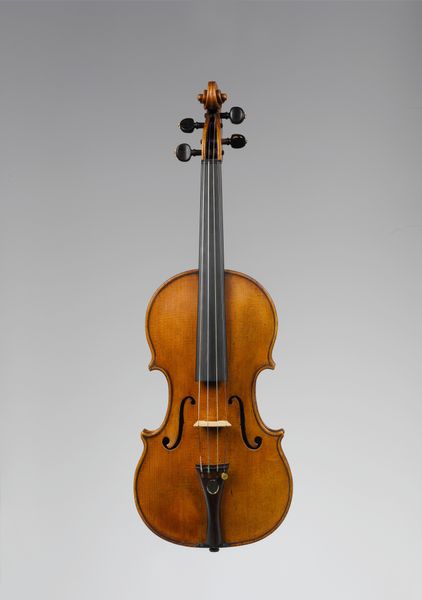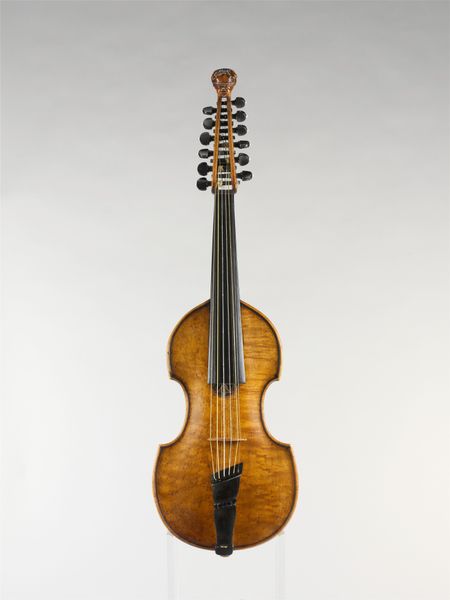
sculpture, wood
portrait
sculpture
wood
musical-instrument
academic-art
Dimensions: L. of body 35.7-35.9 cm (14-1/16 - 14-1/8 in); L. Overall 60.8 cm (23-15/16 in); Max. Width 19.2 cm (7-9/16 in) lower bouts
Copyright: Public Domain
Editor: Here we have Charles Francis Albert’s “Mute Violin,” a wooden sculpture from between 1876 and 1896. What strikes me first is its, well, unusual shape! It's almost cartoonish. It’s intriguing, but I wonder what inspired such a design. How do you interpret this work? Art Historian: The form immediately suggests a subversion of expectation, doesn't it? It speaks to the deeply embedded symbolism of the violin itself. Think of what the violin traditionally represents: passion, skill, artistic expression. Now consider this "Mute Violin." What does muting that passionate voice signify in the context of late 19th-century academic art? Is it a commentary on artistic restraint, or perhaps the silencing of creative voices within rigid structures? Editor: That’s interesting! The silencing part especially resonates with me. Do you think it's more about suppressing individuality? Art Historian: It could certainly be read that way. Look at the abstracted, almost grotesque form of the instrument itself. The conventional, elegant curves are exaggerated into these bulbous shapes, which arguably diminish the instrument’s implied voice. Given that the violin is traditionally associated with solo performance, does this grotesque modification imply a broader commentary about artistic autonomy, maybe the individual's struggle against conformity? Editor: I didn't even consider it that deeply, but what you said about the "silencing of the individual" makes me reflect on the societal constraints that artists probably faced then, and, really, maybe even still. It is food for thought! Art Historian: Indeed. The symbolic potential is quite rich, demonstrating how objects, when transformed into art, can reflect cultural anxieties and evolving identities. Always consider: what symbols were being dismantled, challenged, or reinvented when this work was created? It shifts your view. Editor: I will certainly remember that perspective going forward. Thanks for illuminating that, it gives me a much richer understanding!
Comments
No comments
Be the first to comment and join the conversation on the ultimate creative platform.
